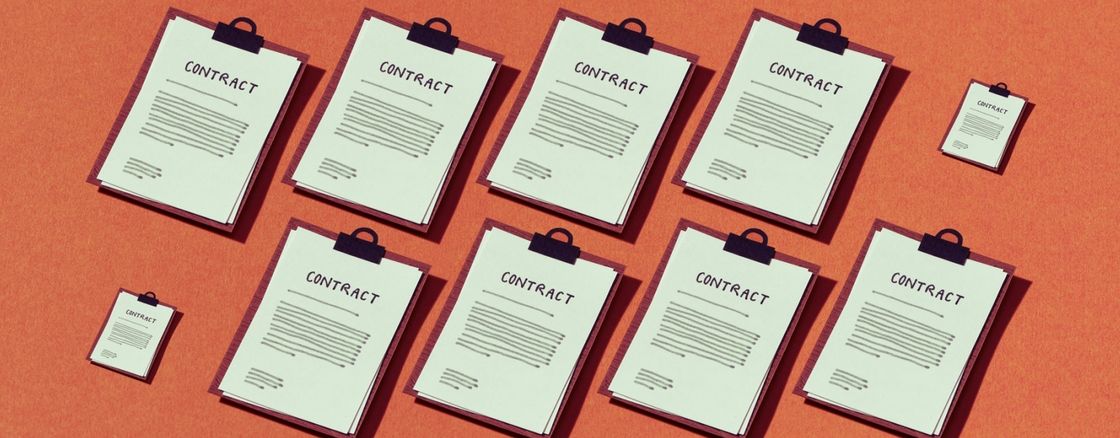How to Get Out of a Purchase and Sale Agreement
Written by:
Own Up Staff
Own Up is a privately held, Boston-based fintech startup that is on a mission to make sure every home buyer receives a fair deal on their mortgage by unconditionally empowering individuals with customized data, personalized advice, and unprecedented access to mortgage lenders to create better financial outcomes and simplify the home financing experience.
See full bio

In January of 2020, over 6 million new and existing single-family homes were sold across the country according to The Federal Reserve Bank of St. Louis. This number includes every buyer who signed The Purchase and Sale Agreement and went through with the purchase. But there were many more buyers who signed The Purchase and Sale Agreement—but didn’t end up buying the house. These buyers fall into two categories: those who were able to back out based on a contingency in the contract not being met or some other agreement, and a much smaller group who backed out despite all contract conditions being met.
The Purchase and Sale Agreement (also called a SPA or P&S Agreement) is a legally-binding document that lays out the contingencies that must be met for the sale to go through. These include a home inspection, an appraisal, a title search, and a financing contingency (in case the buyers can’t get a loan). Sometimes there is also a contingency relating to the buyer selling their existing house and a contingency for the buyer reviewing Homeowner’s Association (HOA) documents if the home is part of a Homeowner’s Association. The contract also lays out the closing costs, closing date and the amount of the Earnest Money Deposit (EMD), an amount paid to the seller by buyers to show they are serious. The EMD is usually paid in hot markets with multiple people interested in the same property.
The multipage real estate document is complicated and filled with a lot of legal jargon. Buyers can find it overwhelming considering a house is likely to be the biggest purchase they have ever made and will ever make. The Purchase and Sale Agreement is usually drafted by the seller’s agent, so buyers should review it carefully, either alone or with their real estate agent, before signing. Buyers should make sure they agree with the contingencies as explained and the time periods allowed for the different parts of the process.
The Purchase and Sale Agreement is a legal contract, with responsibilities on both sides. If either party fails to meet their responsibilities, there are legal channels open. In real estate, one legal remedy is specific performance, and it is sometimes used to compel a buyer or seller to follow through the on the sale if there is a believed breach of contract.
One aspect of that contract is the EMD. The EMD got its name from the first word in the phrase: earnest. Therefore, buyers will get the money back if their offer is not chosen, or a contract is signed and issues arise that legally allow for the sale to be voided. Sellers are not obligated to give the EMD back if buyers get cold feet, or choose not to through with the purchase after signing the contract for legitimate but non contractual reasons like a sudden job offer in a another state.
While these things can happen, the more common scenario is a situation where one or many of the contingencies are not met, allowing the buyer to back out without any consequences. Below are eight ways buyers can get out of The Purchase and Sale Agreement:
- Home Inspection issues: Many contracts give buyers about a week to get a home inspection and notify the seller if they plan to pull out. Some home inspection contingencies allow buyers to walk away while others require them to give sellers the opportunity to offer to make repairs. Common items that may lead to cancellation include structural damage and extensive roof damage.
- Home sale contingency: Some people are concurrently buying a new home and selling their existing one. Home sale contingencies give the buyers a specific amount of time, usually 30 days, to sell their house. If that timeline is not met, the contract is voided with the prospective and the house can be put back on the market.
- Appraisal contingencies: The Purchase and Sale Agreement stipulates that the home must be appraised at a minimum, specific amount. If the home is not appraised for the amount of the sale price, the buyer can renegotiate the sale price or pull away. This contingency protects buyers, as lenders will not offer a loan for more than the appraised value.
- Financing Contingency: The National Association of Realtors reported that 86 percent of homebuyers in 2019 financed their home purchase with a mortgage. The financing contingency protects buyers and sellers in cases where mortgage financing falls through, whether due to the appraisal being too low, inspection issues or a personal financial situation.
- HOA contingencies: Some houses and condos are part of a Homeowners’ Association, or HOA. If HOA documents are not provided before The Purchase and Sale Agreement is signed, there will be a contingency giving buyers a specified amount of time to review the HOA documents and ensure it is financially stable and meets residents’ needs.
- Timelines not met: The Purchase and Sale Agreement sets out a number of timelines that must be met for the sale to go through. In some cases, buyers request the closing date be one of those contingencies. For instance, parents with children starting school and moving a long distance may want a contingency requiring the closing be done by the start of the school year. If this is in the contract and the timeline is not met, the buyers can pull out without consequence.
- Title contingency: When you buy or sell a house, the piece of paper that officially transfers the property to or from you is called a title. The buyer’s offer to buy a house is contingency upon the title to the home being clear of any liens. Buyers have the right to review the home’s history of ownership. If any involuntary liens come up such as federal tax liens or child support liens, the title is not clean and buyers may have legal recourse to pull out of the deal.
- Attorney Review: There are some situations where buyers and sellers are not using real estate agents, such as in For Sale by Owner purchases. In these cases, buyers may hire a real estate attorney to review The Purchase and Sale Agreement. In other situations, buyers and sellers are using real estate agents but also want an attorney review due to complexities in the deal. An attorney contingency gives the attorney a certain number of days to review the deal and either approve, raise issues and/or suggest it be voided.
Homebuyers are often not attorneys, and even if they are, they are not always real estate attorneys. Own Up recognizes how complicated the home buying process is and works with people to educate them on the entire process and act as their guide. If you have questions about the home buying process and specifically The Purchase and Sales Agreement, please contact us. We would love to hear from you.


